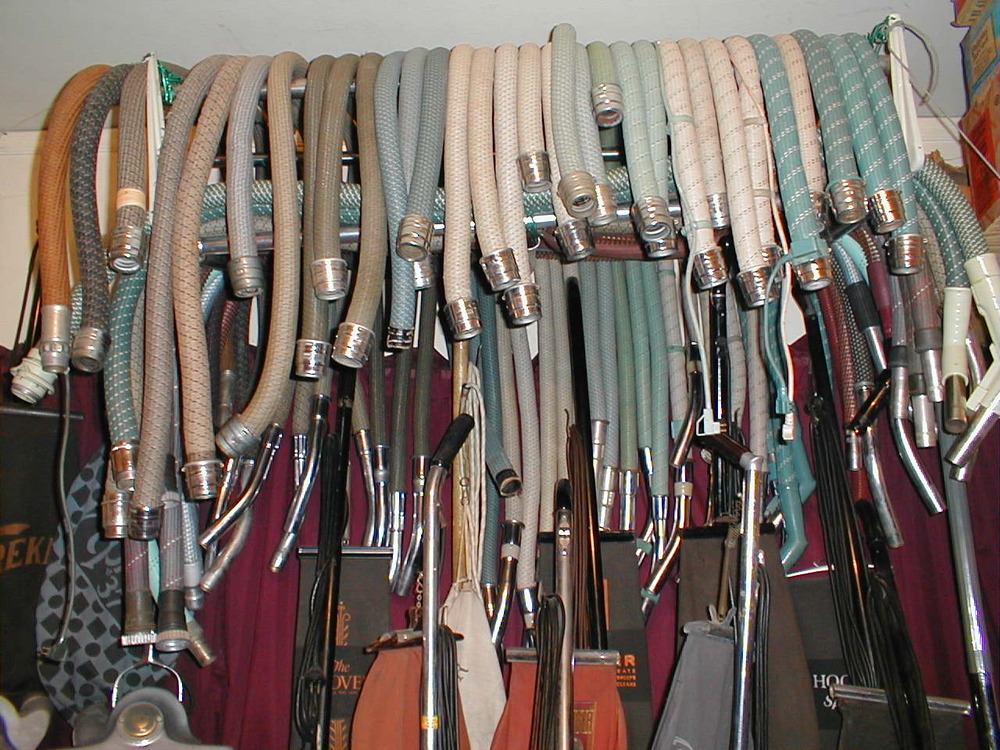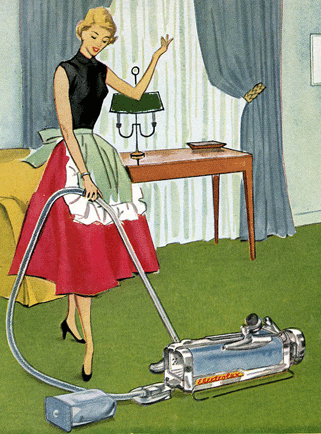|
Thread Number: 24814
Hose storage. |
[Down to Last] |  |
| Post# 278921 , Reply# 1 5/1/2014 at 12:40 (3,640 days old) by kenkart () | ||
|
I keep my.. Braided ones in large totes in the basement where it is cool, the vinyl ones are loosely coiled under my bed. | ||
| Post# 278994 , Reply# 3 5/2/2014 at 02:16 (3,640 days old) by cb123 (Mobile, Al.) | ||
A Hose Tree | ||
Post# 279098 , Reply# 4 5/3/2014 at 00:36 (3,639 days old) by electrolux137  (Los Angeles) (Los Angeles) |
||

.
. cb123, that's not a good way to store hoses, especially cloth hoses. They will grow weak where they're bent over the arms of the rack and the airtight seal will eventually be compromised and the weaving will start to unravel. The best way to hang them would be across two stout dowels spaced about 5 feet apart. Hanging the hoses across two supports will keep all the weight of the hose from pulling against one area of the hose. The attached photo is of my vacuum cleaner display at my former apartment. I had hoses hanging in two different directions because there were so many of them. The bottom row of hoses went left-to-right across a set of steel Electrolux wands spaced about 5 ft. apart (one wand at each end). The upper row of hoses went back to front across two sets of wands (three sections of wands per set) spaced about 3 ft. apart. There is a third section of wands inside the hose array for more structural integrity and support. All those hoses weighed a lot! I created a framework for the wands out of large steel angle brackets and hung them from large eye-hooks screwed into the ceiling. There are surely less complicated ways of doing this, especially for just a few hoses. But again, the idea is to avoid the hose hanging from just one area. 
| ||
| Post# 279099 , Reply# 5 5/3/2014 at 01:47 (3,639 days old) by ultralux88 (Denver, Colorado) | ||
 | ||
| Post# 279100 , Reply# 6 5/3/2014 at 02:02 (3,639 days old) by cb123 (Mobile, Al.) | ||
Charles,
I'm completely dumbfounded to the fact why you don't post more photos of you collection. Such as that Premier for instance, why! you could do a complete thread alone, just, on that one. I know what you mean about the hoses, I rotate them out when I vacuum. I also like to use fabric softer to keep the material from drying out. It also keeps them soft and subtle, not to mention flexible. The Eureka model 9 hose to the left was nearly mummified, but after a couple treatments, its no longer brittle nor crunchy and it holds air quite nicely. Thanks again for the info and post some photos of your more interesting vacuums. Calem!
| ||
| Post# 279157 , Reply# 7 5/3/2014 at 13:16 (3,638 days old) by pr-21 (Middletown, OH) | ||
This is how I store mine | ||
| Post# 279213 , Reply# 8 5/3/2014 at 23:23 (3,638 days old) by cb123 (Mobile, Al.) | ||
PR-21 | ||

 Comes to the Rescue!
Comes to the Rescue!